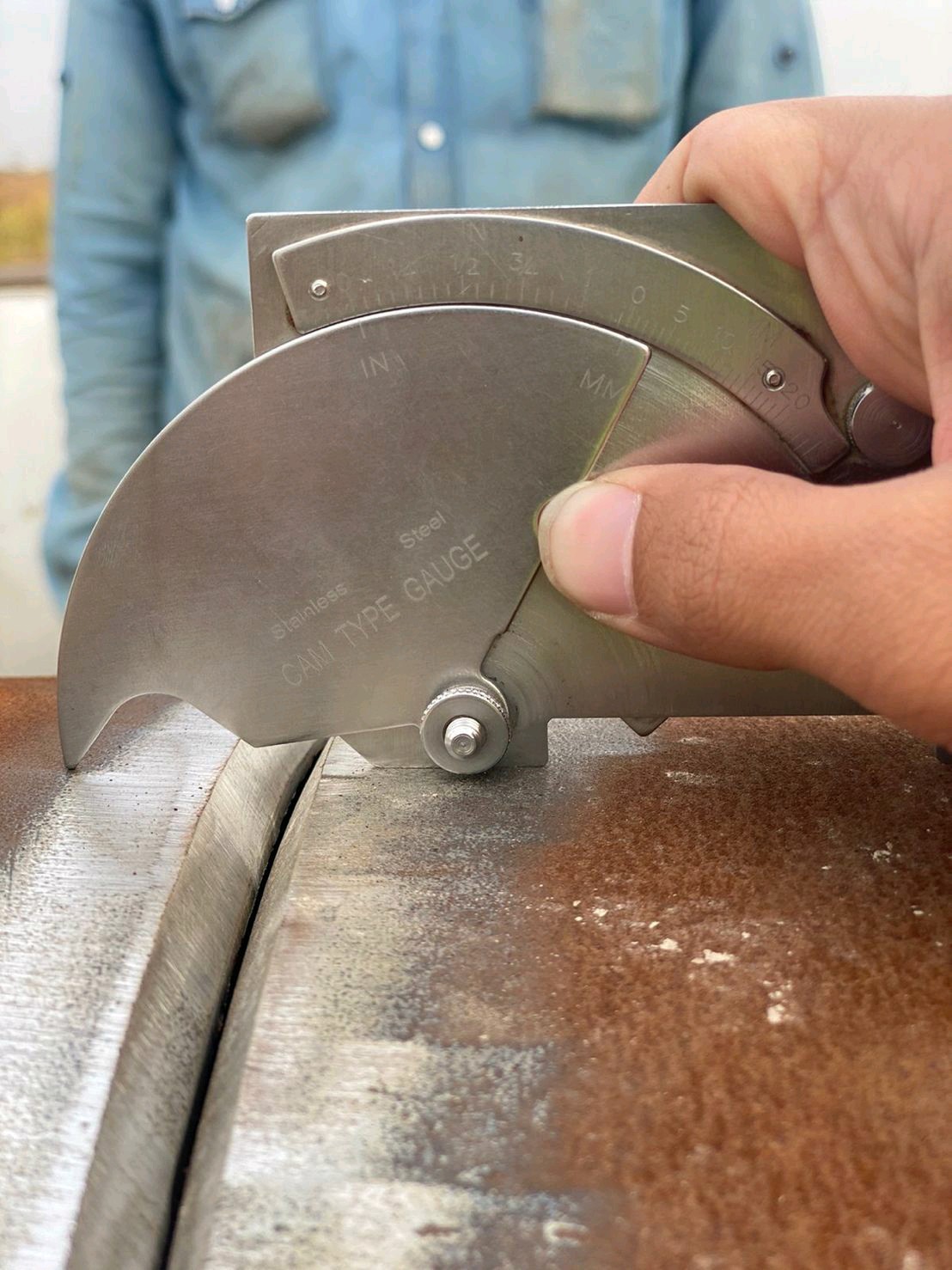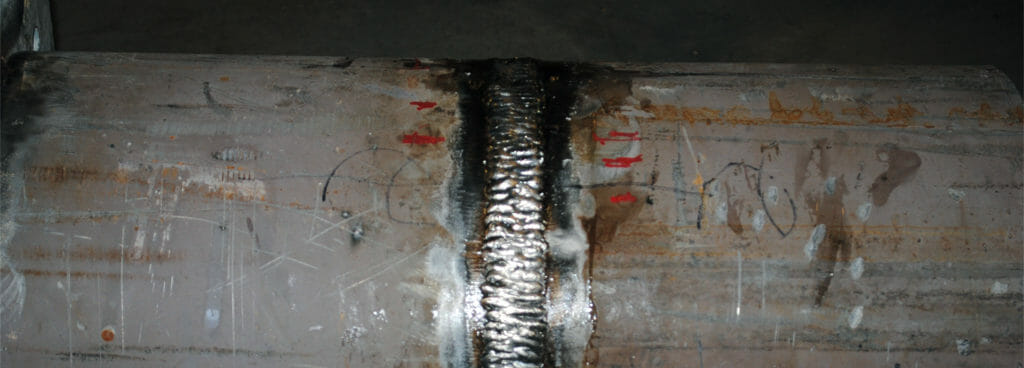Why Select Expert Welding Inspection Madison for Your Jobs
Why Select Expert Welding Inspection Madison for Your Jobs
Blog Article
Exactly How Effective Welding Inspection Enhances Structural Stability and Longevity
In the realm of construction and engineering, the importance of welding inspection can not be overstated, as it plays a crucial function in ensuring structural integrity and expanding the life-span of tasks. By deploying a series of innovative examination techniques, such as radiographic and ultrasonic screening, professionals can determine problems that could jeopardize the reliability of a framework. However, the concern continues to be: how do these careful processes translate right into concrete advantages for sturdiness and safety and security? Sign up with the expedition of how reliable welding examinations can change possible susceptabilities right into toughness, adding to the enduring success of buildings.
Value of Welding Evaluation
Making sure the structural stability and safety of bonded buildings requireds strenuous welding inspection procedures. Welding examination offers as a critical safeguard in the construction and production industries, where the toughness and longevity of joints dramatically impact the general performance of structures.
Along with safety and security, welding evaluation plays an important role in quality control. By sticking to predetermined standards, inspections determine the consistency of welds, making certain that each fulfills the desired strength and aesthetic requirements. This uniformity is essential not just for safety and security however likewise for preserving the track record and reliability of manufacturers and fitters. Governing compliance is a considerable driver of welding evaluation techniques. Industry criteria and codes, such as those from the American Welding Society (AWS) or the International Organization for Standardization (ISO), require adherence to strict guidelines, highlighting the importance of examinations in satisfying these legal and specialist commitments.
Key Assessment Strategies

Ultrasonic Evaluating (UT) makes use of high-frequency acoustic waves to detect subsurface problems, supplying precise info concerning weld stability without triggering any kind of damages. Radiographic Testing (RT), entailing X-rays or gamma rays, offers an in-depth photo of the weld's internal structure, exposing surprise blemishes. Magnetic Particle Testing (MPT) is an additional non-destructive method, particularly effective for finding surface area and near-surface interruptions in ferromagnetic products.
Penetrant Testing (PT) involves the application of a fluid color to reveal surface-breaking defects, using a affordable and simple remedy for non-porous products. Each method has its specific applications, staminas, and restrictions, and commonly a mix of techniques is utilized to accomplish detailed examination outcomes. Mastery of these strategies enhances the integrity and resilience of welded frameworks, lining up with security and performance expectations.
Identifying Common Issues

Porosity, characterized by gas pockets you can find out more within the weld, minimizes the weld's toughness and toughness. It frequently arises from impurities or improper securing gas. Splits, which can take place throughout or after welding, present substantial threats as a result of their possible to circulate under anxiety. They typically occur from too much anxiety, fast cooling, or inappropriate weld style.
Insufficient blend, where the weld metal fails to bond completely with the base product, threatens the structural stability, leading to weak joints. This flaw typically comes from insufficient heat input or inappropriate welding method. Slag inclusions occur when non-metallic materials are trapped in the weld, compromising its stamina and top quality. These are typically an outcome of inadequate cleansing between weld passes or inappropriate change use.
Identifying these issues via precise assessment methods, these details such as visual assessment, ultrasonic testing, or radiography, is important. Dealing with these problems makes certain weld high quality, ultimately sustaining the structural honesty and safety of the constructed atmosphere.

Enhancing Structural Performance
Understanding the value of determining common weld defects normally leads to checking out techniques for enhancing architectural performance. The fundamental approach for enhancing efficiency entails employing advanced welding strategies and materials that alleviate issue occurrence. Utilizing high-grade filler materials and guaranteeing correct warm control can substantially decrease concerns such as porosity and cracking, thereby enhancing the weld's honesty.
Integrating state-of-the-art welding innovations, such as laser welding and rubbing mix welding, additional magnifies architectural strength. These strategies provide premium accuracy and reduced thermal distortion, directly affecting the durability and stamina of the bonded structures. In addition, taking on automated welding systems can ensure consistent and repeatable weld quality, reducing human error.
Additionally, carrying out extensive pre-weld and post-weld procedures is essential. Appropriate joint style, surface area preparation, and stress-relieving procedures add to optimal weld performance. Conducting thorough pre-weld assessments permits early detection of potential concerns, helping with prompt modifications before they jeopardize the framework.
Long-lasting Benefits of Inspection

Through cautious examination practices, the lasting advantages to architectural integrity come to be progressively apparent. Consistent and comprehensive welding inspections play an essential duty in avoiding structural failings by identifying issues and incongruities early in the building and construction process.
Moreover, normal evaluations add to keeping compliance with market criteria and guidelines, consequently avoiding lawful and financial effects. This adherence to quality control not just boosts the integrity of the structure yet additionally cultivates count on amongst stakeholders, including clients, engineers, and regulative bodies. The extensive documentation of evaluation results works as a beneficial source for future maintenance and repair initiatives, assisting in notified decision-making.
Additionally, effective evaluation methods sustain innovation by integrating advanced modern technologies such as non-destructive screening and digital imaging, which can boost accuracy and performance. This technological integration better underscores the commitment to excellence in structural stability. Eventually, spending in precise welding evaluations is a prudent technique that yields substantial long-lasting Get More Info benefits, protecting both the monetary and physical financial investment in framework projects.
Verdict
Efficient welding examination plays an important role in enhancing architectural integrity and longevity by identifying issues early in the building process. Using strategies such as aesthetic inspection, ultrasonic screening, and radiographic screening ensures the detection of problems like cracks and porosity that compromise weld stamina. Rigorous assessments make sure compliance with sector standards, consequently prolonging the lifespan of structures, reducing pricey repairs, and fostering stakeholder rely on the reliability and security of bonded buildings.
In the world of construction and engineering, the value of welding examination can not be overemphasized, as it plays a critical function in making sure structural stability and expanding the life-span of projects.Ensuring the structural integrity and safety of bonded buildings requireds extensive welding examination processes.Building upon the relevance of welding inspection in protecting structural integrity, recognizing the essential inspection methods comes to be imperative for effective application. Effective welding examination encompasses a range of approaches made to evaluate weld quality, making certain compliance with rigid design requirements - Welding Inspection Madison.Reliable welding examination plays a critical role in enhancing architectural stability and durability by identifying issues early in the building and construction procedure
Report this page